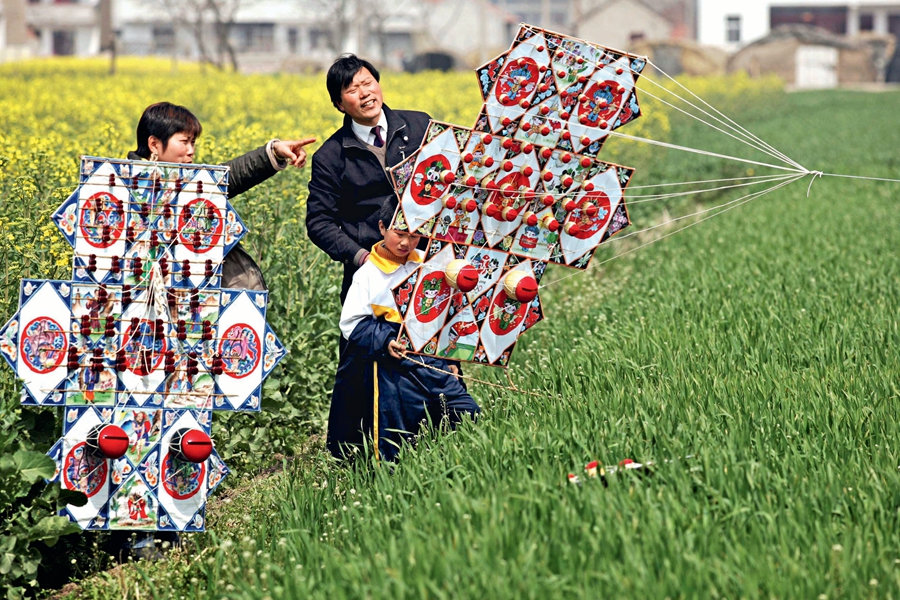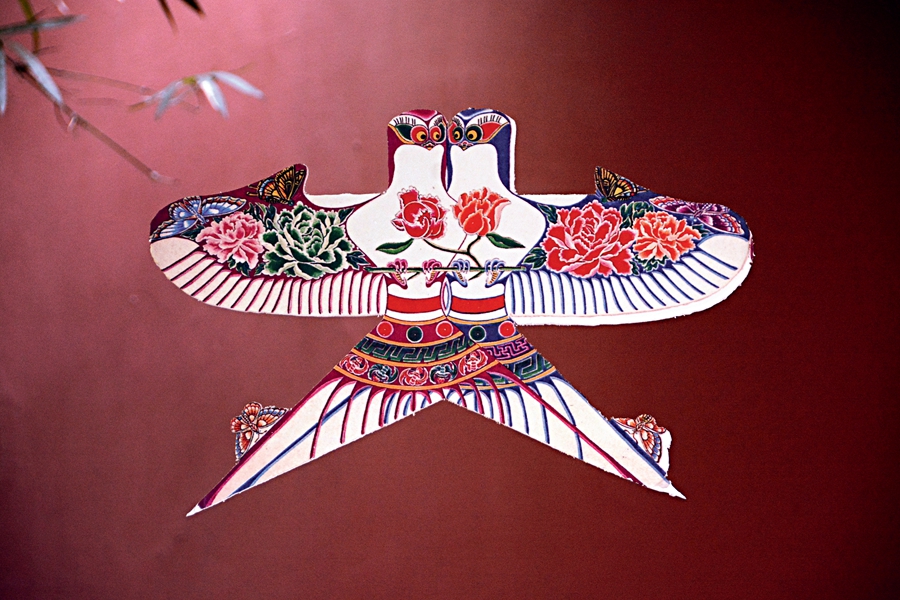The Earliest “Aircraft”
China Today,April 20, 2018 Adjust font size:
Beijing Swallow-shaped Kites
The representative design of Beijing kites is the swallow-shaped kite. Nini, one of the five Fuwa (good-luck dolls), or five official Beijing Olympic Fuwa Mascots, is created based on the Beijing swallow-shaped kites.
Nantong kites feature large and flat shapes.
Beijing abounds in swallows. Every year they return to the north as the weather becomes warmer, signifying the arrival of spring, therefore, they are considered as an auspicious bird. In the past, the kites made in Beijing featured simple patterns and were not tough enough to withstand typical Beijing strong winds. Cao Xueqin, the author of A Dream of Red Mansions, spent his later years in Beijing. He wanted to make a kite that could resist the strong wind and meanwhile show artistic beauty. He improved the traditional swallow-shaped kite by adopting the frame of a hard arm and soft wings. With the hard arm, the kite can maintain stability when flying. With soft wings, the kite looks more like a real swallow flying in the sky.
In addition, Cao used the swallows, the main figure in his kites, to personify different groups of people, for example, a fat swallow for an adult man, a slim swallow for a beautiful woman, a pair of swallows for a loving couple, a medium-sized swallow for a young boy, small swallows for children, and a baby swallow for babies.
To imitate different figures, special attention should be paid while making frames to painting patterns and images. Also the kites need to be easy-to-fly. Cao Xueqin wanted the kites to fly in a stable way in the sky, while at the same time show the corresponding dynamic state of the figures that the kites emulate. For example, a slim swallow emulates a slim woman who is a good dancer. The kite maker should make it look like a dancer in the sky when flying. Cao’s innovation of the Beijing swallow-shaped kites has significantly improved the traditional kite making craftsmanship, and has attracted many followers. Such kites have been popular in Beijing for over 200 years till today.
The kites made by Cao reflected his ideals and world views. He recorded the instructions on making kites in a book. With diagrams, Cao showed every step about how to make a kite and his understanding about the art of kites. The book is of great value in terms of history, culture, academic study, and practice.
In 2011, the traditional craftsmanship required to make swallow-shaped Beijing kites was included as a national intangible cultural heritage.


